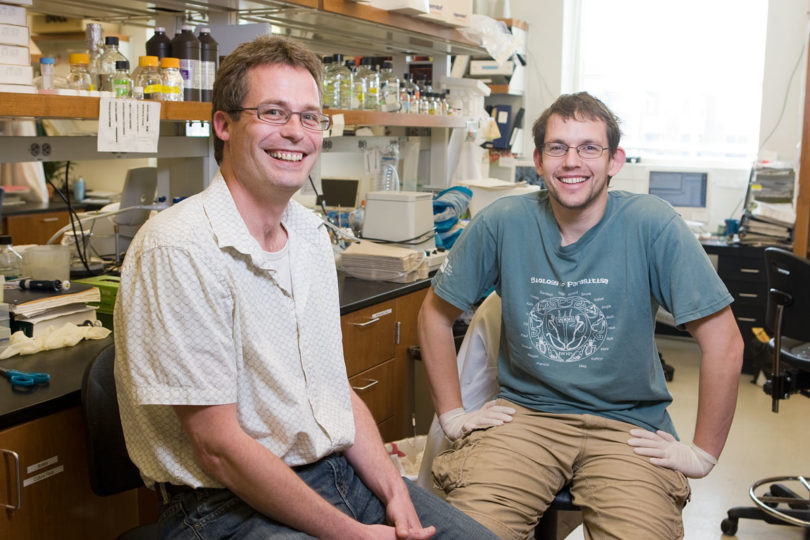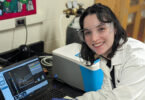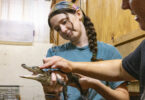As diseases go, toxoplasmosis is a wolf in sheep’s clothing. Its effects are usually mild, though infection is for life, and two out of five Americans are chronically infected. Those with compromised immune systems can, however, face serious complications. And the disease also can have serious effects on a human fetus if contracted by a mother.
The agent that causes the disease, Toxoplasma gondii, is of strong interest to scientists because it is easy to manipulate in the lab and can lead to insights about other parasitic diseases such as malaria that kill millions each year.
Now, a team of researchers at UGA led by postdoctoral associate Giel van Dooren has discovered a protein in T. gondii that is essential for the parasite’s growth. The group’s work points the way toward a new model system that can be used in studying other parasitic diseases and could one day lead to an effective target for drug intervention.
“By understanding basic cellular processes in Toxoplasma we can gain important insights into the biology of related parasites,” said van Dooren.
The study was published last month in the online edition of the journal Current Biology. The work took place in UGA’s Center for Tropical and Emerging Global Diseases in the Franklin College of Arts and Sciences. Other authors of the paper include Boris Striepen of the CTEGD and the department of cellular biology at UGA; Sarah Rieff of the department of cellular biology; Cveta Tomova and Bruno Humbel of Utrecht University in the Netherlands; and Markus Meissner of the Heidelberg University School of Medicine in Germany.
Toxoplasma belongs to a group of parasites that contain a chloroplast-like organelle, the apicoplast. Chloroplasts are the home of photosynthesis in plants and algae and are responsible for the green color of leaves. Apicoplasts have long puzzled scientists. What does a parasite living in the brain or blood of humans have to do with a structure associated with harvesting sunlight? It turns out that the chloroplasts have additional functions, and it is these functions that the parasites require.
Since humans do not have chloroplasts, the parasite’s dependence on this organelle is viewed by researchers as an Achilles heel. Scientists are interested in the group to which Toxoplasma belongs, the Apicomplexa, because it includes such parasites as Plasmodium, which causes malaria.
“The apicoplast is essential for parasitic growth and must correctly divide for the organism to stay alive,” said Striepen, also a senior author on the study at UGA. “Understanding more of how it works is crucial to progress in understanding how these disease processes evolve.”
Toxoplasma parasites replicate by dividing into two new parasites. Each new parasite requires a new apicoplast that must divide in synchrony with the parasite. What the team showed is that a protein called DrpA is crucial to the division of the apicoplast.
“Understanding that DrpA is necessary for apicoplast fission gives researchers a new working model to understand how the causative agents of several parasitic diseases flourish in human and animal hosts,” said van Dooren.
Indeed, the team’s search for similar dynamin-related proteins led them to examine, in addition to T. gondii, the genomes of four other parasitic organisms.
The new system now allows researchers to study what happens when organisms lose their apicoplast organelles.








